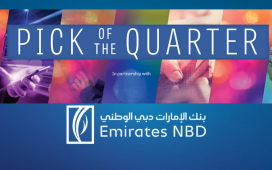 Rawan Al Sayed, Founder and CEO, Becoming Social
Rawan Al Sayed, Founder and CEO, Becoming SocialIn today’s hyper-visual, trend-driven social media ecosystem, brand marketers are constantly challenged to evolve without losing their essence.
Two recent aesthetic trends — the nostalgic Ghibli aesthetic and the playful Toy Box trend — have sparked a deeper conversation in marketing circles: should brands embrace every trend that goes viral, or stay rooted in a consistent, timeless identity?
Rise of aesthetic trends: Ghibli and Toy Box takeover
The Ghibli aesthetic — inspired by the iconic animation studio — is soft, emotional, and visually poetic. Think cosy home scenes, hazy lighting, and a sense of gentle nostalgia.
In contrast, the Toy Box trend is bold, chaotic, and playful — defined by vibrant colors, chunky typefaces, sticker-like overlays, and maximalist fun. Both have taken over TikTok and Instagram feeds globally, resonating particularly well with Gen Z and young millennials in the MENA region.
These trends aren’t just fleeting visuals — they’re mood boards that communicate emotion, personality, and even values. For brand marketers, the question becomes: when is it strategic to jump in?
Trend-Chaser: Relevance is the new currency
For trend-chasing marketers, these aesthetics are seen as high-impact opportunities to drive engagement, cultural relevance, and visibility. In the MENA region, where digital platforms are heavily shaping consumer behaviour, staying ahead of aesthetic waves can position brands as agile, youthful, and in tune with the audience.
Leveraging the Ghibli trend for a homeware or wellness brand, for instance, could deepen emotional storytelling.
Meanwhile, the Toy Box aesthetic works well for retail, FMCG, or youth-focused campaigns that aim to energise and entertain. Trend-chasers view aesthetics as cultural languages, and fluency in them signals creative leadership.
Traditionalist: Brand consistency builds trust
Yet not everyone is convinced. Traditionalist marketers believe that constantly shape-shifting to match fleeting visual fads can dilute the brand’s long-term equity.
They argue that a well-crafted brand identity — anchored in timeless values, tone, and visual language — creates emotional consistency, especially in crowded digital spaces.
For brands with a well-established persona or a high-involvement purchase journey (such as luxury, automotive, or finance), deviating too far into whimsical or chaotic trends might send mixed messages. The risk of short-term engagement cannibalising long-term trust is real.
Strategic sweet spot: Adapt without losing identity
The most effective marketers today aren’t on either extreme — they’re selective adapters. The goal isn’t to chase every trend, but to recognise when a trend genuinely aligns with the brand’s purpose, audience, and messaging goals.
A fashion brand could use the Toy Box aesthetic for a limited-time Gen Z campaign while keeping its core visual identity intact.
A wellness brand might weave the Ghibli mood into storytelling without changing its entire content strategy. This nuanced approach allows brands to stay relevant without losing authenticity.
MENA brands must lead with cultural intelligence
In the MENA region, where consumer behavior is influenced by both global culture and local nuance, trend adoption must be culturally contextual.
A trend that resonates in Tokyo or New York might not land the same in Riyadh or Cairo unless it’s localised with insight and intention.
Brands need to go beyond aesthetic mimicry and understand why a trend connects — and how to make it meaningful in a regional context.
Final thoughts: Thoughtful creativity wins
Ultimately, trend-chasing and traditional branding aren’t enemies — they’re tools. And the most powerful campaigns emerge when creativity is paired with strategy.
Brands that balance cultural relevance with authenticity will not only engage audiences today but earn their loyalty for years to come.
In an age of fleeting attention spans, thoughtful creativity — not just trendy visuals — is the real differentiator. And those who master this balance will shape the future of brand storytelling in the MENA region and beyond.
By Rawan Al Sayed, Founder and CEO, Becoming Social









